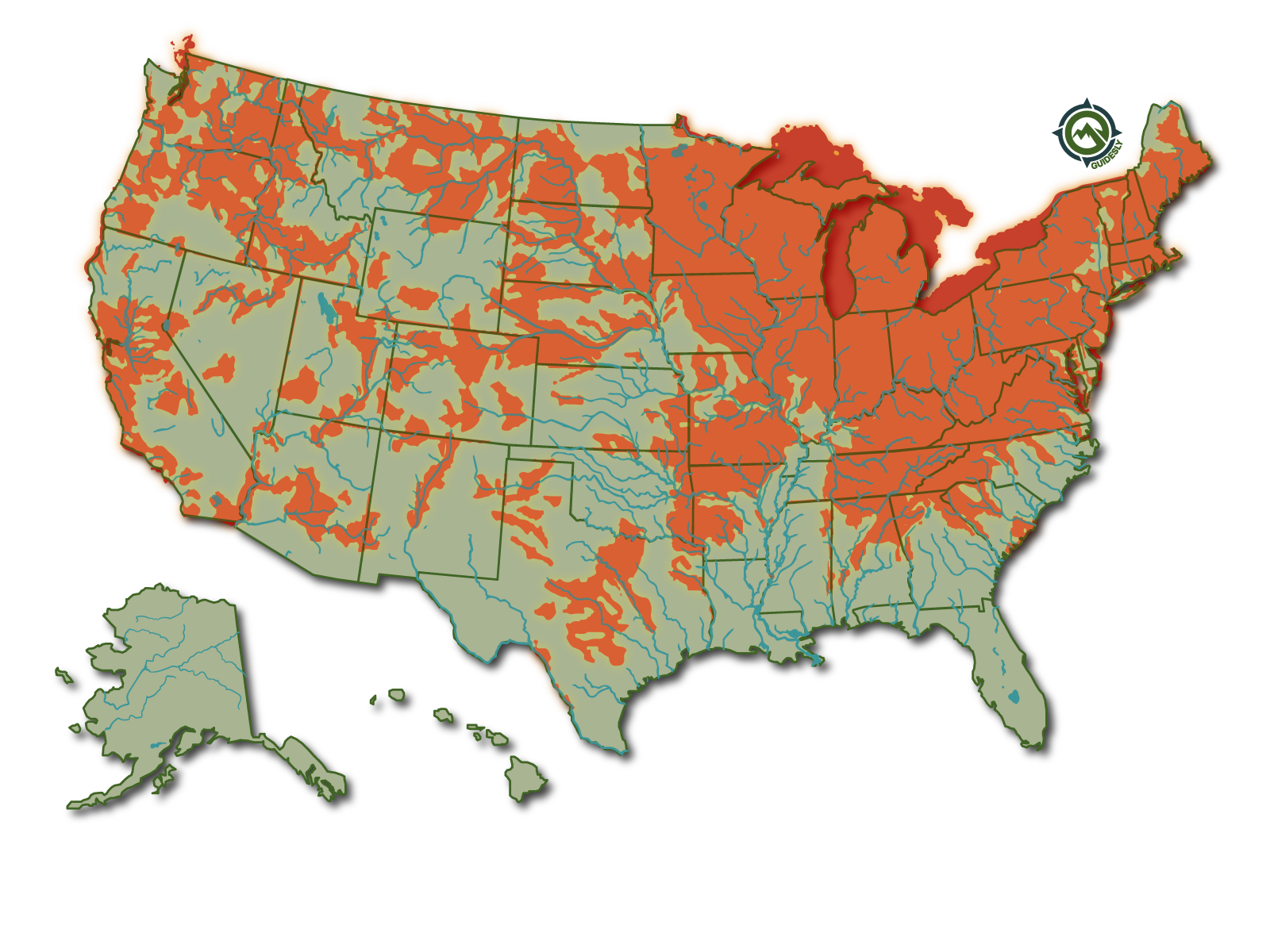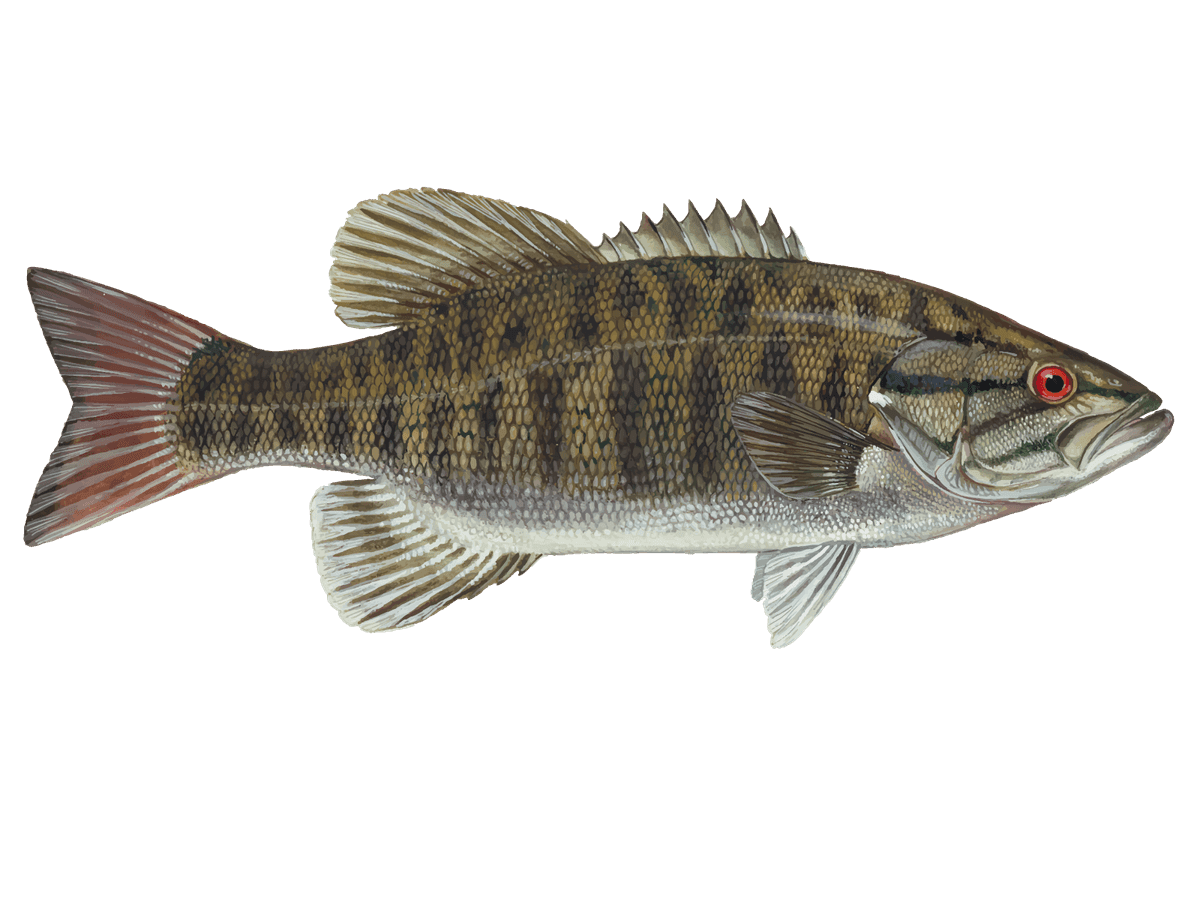Winter Smallmouth Bass Fishing with King Fisher
- Published Date: July 17, 2025
- Fishing
- Harpers Ferry, WV
- $200 - $1,100 price range
- Updated Date: October 16, 2025
Summary
%2F%2Fusers%2Fdfacdd97-18ca-4826-b657-5a89ba3d8e10%2Fratecard%2Fwinterfloat.png&w=1200&q=75)
Winter Bass Action


Full Day Bass Bonanza on the Potomac
Ready to ditch the winter blues and get your line wet? Our full-day guided bass fishing trip on the Potomac River is just the ticket. From December 1st through March 1st, we're hitting the water to target those cold-water smallmouth bass that'll make you forget all about cabin fever. Whether you're a seasoned angler looking to fine-tune your finesse techniques or a fly fishing enthusiast ready to sling some streamers, this trip's got something for everyone. We'll keep you warm, fed, and on the fish all day long.
Trip Overview
Picture this: You're bundled up against the winter chill, but the anticipation of what's below the surface has you fired up. As we cruise down the Potomac, the crisp air nips at your cheeks, but you're too focused on the fish finder to notice. We've got 8 solid hours to dial in those winter patterns and put some bronzebacks in the boat. With room for two anglers, it's the perfect setup for you and a buddy to compare notes (and maybe talk a little smack) as we work different techniques throughout the day. Don't worry about gear or grub – we've got all the rods, tackle, and even a hot lunch to keep you in the game. Just remember, once you put that deposit down, you're locked in for a day of winter fishing action.
Techniques on Tap
When the water temps drop, it's all about slowing down and getting methodical. We'll be working three main techniques to entice those lethargic winter bass. First up, finesse fishing – think light line, small baits, and a whole lot of patience. We'll show you how to work a drop shot or a Ned rig with the precision of a surgeon. Next, we'll chunk some jigs, dragging them slow and steady along the bottom where those big girls are hunkered down. Last but not least, it's jerkbait time. We'll teach you the art of the pause – sometimes it's that long, agonizing wait that triggers a strike. For the fly anglers out there, we're talking big, meaty streamers. You'll learn how to work them deep and slow, right in the strike zone. It's not about quantity this time of year; it's about quality, and we're after those chunky, winter-fat smallies.
Species You'll Want to Hook
Smallmouth Bass are the stars of this winter show on the Potomac. These bronze bruisers are some of the toughest, pound-for-pound fighters you'll tangle with in freshwater. In the colder months, they tend to school up in deeper holes and around structure, which means when you find one, you've likely found a bunch. Winter smallies might be a bit sluggish, but they still pack a punch when they decide to eat. These fish can push 5 pounds or more in the Potomac, with the average keeper running 2-3 pounds. The cool thing about winter bass fishing is that the bite, while slower, can produce some of the biggest fish of the year. These bass have been feeding up all fall, and they're at their heaviest. When that jig or streamer gets whacked, be ready – these cold-water smallmouth have a tendency to bulldog straight for the bottom, testing both your gear and your nerves.
What to Expect on the Water
Let's be real – winter fishing isn't for the faint of heart, but that's what makes it so rewarding. You'll want to layer up with some good thermal gear because we'll be out there rain or shine (or snow). The Potomac can throw some curveballs this time of year, from icy guides to fingers that feel like they're about to fall off. But here's the thing – when that line goes tight, and you're connected to a fat, angry smallmouth, you'll forget all about the cold. We'll be working deeper pools, current seams, and rocky structures where the bass like to hunker down. The action might be slower than in the warmer months, but each bite is like striking gold. And hey, there's nothing quite like the solitude of a winter river – no jet skis, no pleasure boaters, just you and the fish.
Why Anglers Keep Coming Back
There's something special about winter bass fishing that keeps the die-hards coming back year after year. Maybe it's the challenge of outsmarting fish when they're at their most lethargic. Or perhaps it's the chance to land a personal best when most folks have hung up their rods for the season. Our regulars love the one-on-one instruction they get this time of year – with just two anglers on board, you've got the guide's full attention to dial in your technique. Plus, there's a certain camaraderie that comes with braving the elements together. Swapping stories over a hot lunch, sharing hand warmers, and celebrating every catch like it's a trophy – that's what winter fishing is all about. And let's not forget, you're getting to fish some of the best water on the East Coast without fighting the usual crowds.
Time to Book Your Spot
Alright, let's cut to the chase – if you're still reading, you're probably itching to get out on the water. This full-day Potomac River bass trip is your ticket to beating the winter doldrums and putting some serious bend in your rod. We've got the knowledge, the gear, and the hot spots to make it happen. All you need to bring is your game face and a willingness to brave a little cold for the chance at some big-time winter bass action. Remember, we're only running these trips from December 1st to March 1st, and spots fill up fast. The smallmouth are down there, getting fatter by the day, just waiting for your jig or streamer to swim by. So what do you say? Ready to turn that cabin fever into bass fever? Give us a call, lock in your date, and let's make some winter fishing memories on the Potomac. Just don't forget – once that deposit's down, you're committed to the cause. See you on the river!
Learn more about the species
Smallmouth Bass
Smallmouth Bass (Micropterus Dolomieu) Description
Smallmouth Bass belongs to the Sunfish family (Centrarchidae) and is a popular freshwater fish among anglers. Smallmouth Bass has a dark green or black color body, with vertical dark brown stripes that usually fade with age, and the color contrast may vary depending on the fish’s habitat. Their eyes are red or brown. They have two dorsal fins; the front one has 10 fin spines while the other has 10 to 15 soft rays.

Female Smallmouth bass are usually larger in size than males. The average size of smallmouth bass can be 18–20 inches. On average, they usually live only 5 to 6 years but can survive up to 15 years. Smallmouth bass found in lakes are larger than those found in streams and ponds. Females usually weigh from three to six pounds, while the males are around 2 pounds.
Smallmouth Bass Habitat

This bass species can be found in clear waters, such as ponds, lakes, and rivers. They prefer rubble and rocky bottoms. Smallmouth bass also prefer moderate temperatures, and they will swim deeper in the cooler water during summer.
Spawning
Smallmouth Bass spawn March-May when water temperatures reach between 59 and 64 degrees. The males build nests in the shallow waters of lakes and rivers. The nest is built building within 150 yards of where the male built his nest the previous year.
Diet
The Smallmouth Bass eats small fish, crayfish, and insects. They hide behind a fallen tree or a rock and attack when the prey is near.
Fishing Techniques - How to Catch Smallmouth Bass
A light breeze and calm waters are best suited to catch Smallmouth Bass. In spring and fall, they like to swim in open waters during bright days and warm temperatures. In summer, they swim deep under cooler water and are harder to find. It is best to fish for Smallmouth early morning or late evening.
Smallmouth bass are fighters. A spinning rod of light to medium action with a 6 to 10 pounds test line is recommended.
There are plenty of baits and lures that work successfully to catch these fish; insects, jigs, minnows, plugs, plastic worms, spoons and night crawlers. A favorite of anglers is to use spinning baits that when rigged weightless, can hang on top of the water. When the fish are in deeper water during the summer, use a rig with a weighted vertical drop hook.
Fly-fishing Smallmouth Bass is popular due to their abundance and strength. When you want to cast into deeper water, use a 6, 7 or 8 weight rod. This will be suitable for strong winds, landing larger fish, and a long cast. A longer rod, 81/2- to 9-foot, is good when you need accuracy for casting near shoreline structures or long-distance casting.
Is Smallmouth Bass Good to Eat
Smallmouth bass have a firm filet with a mild, yet distinct flavor that pairs perfectly with a variety of seasonings and cooking methods. So whether you prefer grilling, frying, or baking your catch, smallmouth bass is a tasty and versatile option that you won't want to miss out on. What's more, smallmouth bass are a healthy food option, as they are excellent sources of protein and Omega-3 fatty acids.
With any freshwater fish, you need to be mindful of the water you are fishing. Make sure if you are eating your catch, the water is clean and be aware that freshwater fish should always be cooked.

About the Water Raft
%2F%2Fusers%2Fdfacdd97-18ca-4826-b657-5a89ba3d8e10%2Fvehicle_picture%2Fimgp4340.jpg&w=1200&q=75)
Vehicle Guest Capacity: 2
Manufacturer Name: -
Maximum Cruising Speed: 1
Number of Engines: 1
Horsepower per Engine: 1
%2Ffit-in%2F250x250%2Fguide_websites%2F1727%2Fimages%2Fkingfisherguideserviceshorizontalcolor.png&w=1200&q=100)
%2Fusers%2Fdfacdd97-18ca-4826-b657-5a89ba3d8e10%2Fimages%2Flockes-landing-fishing-techniques-best-3610.png&w=768&q=75)
%2Fusers%2Fdfacdd97-18ca-4826-b657-5a89ba3d8e10%2Fimages%2Flockes-landing-fishing-techniques-best-3536.png&w=768&q=75)
%2Fusers%2Fdfacdd97-18ca-4826-b657-5a89ba3d8e10%2Fimages%2Flockes-landing-fishing-techniques-best-10786.png&w=768&q=75)
%2Fusers%2Fdfacdd97-18ca-4826-b657-5a89ba3d8e10%2Fimages%2Fharpers-ferry-fishing-techniques-best-6705.png&w=768&q=75)
%2Fusers%2Fdfacdd97-18ca-4826-b657-5a89ba3d8e10%2Fimages%2Ffishing-boat-brunswick-boat-ramp-6437.png&w=768&q=75)
%2Fusers%2Fdfacdd97-18ca-4826-b657-5a89ba3d8e10%2Fimages%2Fharpers-ferry-fishing-techniques-best-3753.png&w=768&q=75)
%2Fusers%2Fdfacdd97-18ca-4826-b657-5a89ba3d8e10%2Fimages%2Fbrunswick-boat-ramp-fishing-techniques-3587.png&w=768&q=75)
%2Fusers%2Fdfacdd97-18ca-4826-b657-5a89ba3d8e10%2Fimages%2Fbrunswick-boat-ramp-fishing-techniques-12321.png&w=768&q=75)
%2Fusers%2Fdfacdd97-18ca-4826-b657-5a89ba3d8e10%2Fimages%2Flockes-landing-fishing-techniques-partly-4419.png&w=768&q=75)
%2Fusers%2Fdfacdd97-18ca-4826-b657-5a89ba3d8e10%2Fimages%2Flockes-landing-fishing-techniques-cloudy-3227.png&w=768&q=75)
